
1
PROF.DR.MAHA SHAKIR (Lec.1)
Hemodynamic Disorders ,
Thromboembolism, and Shock
The health of cells and tissues depends on the circulation of blood,
which delivers oxygen and nutrients and removes wastes generated
by cellular metabolism.
In this system we will discuss the following:
• Hyperemia and Congestion
• Hemorrhage
• Edema
• Thrombosis
• Disseminated Intravascular Coagulation
• Embolism
• Infarction
• Shock
Hypermia and Congestion
Definition:
Both of them can be defined as a local increase in volume of
blood in a particular tissue.
Hypermia
It is an active process resulting from arteriolar dilation and increased
blood inflow, as occurs at sites of:
• exercising skeletal muscle
• or acute inflammation
Hyperemic tissues are redder than normal because of
engorgement with oxygenated blood.
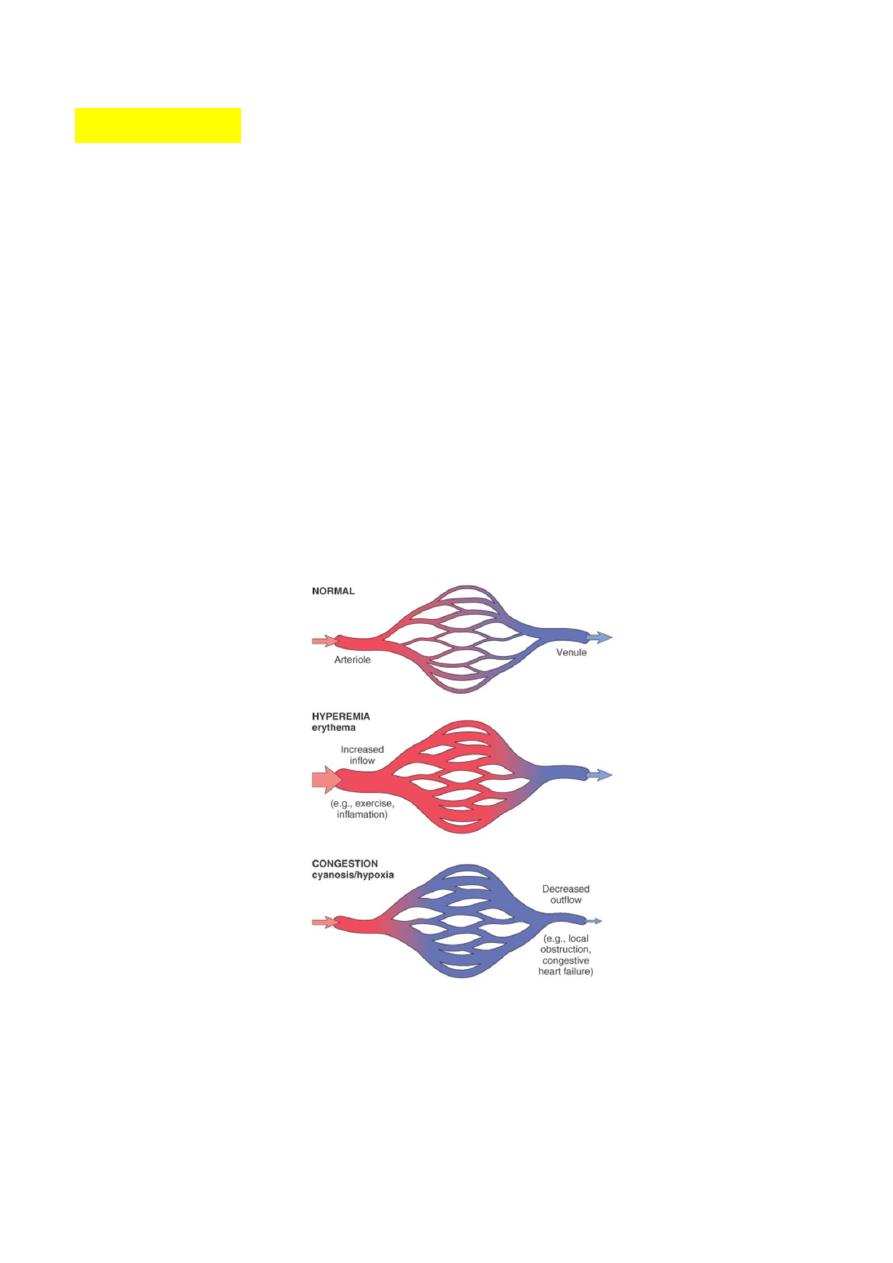
2
Congestion
Congestion
is a passive process resulting from impaired outflow of
venous blood from a tissue. It can occur:
• systemically, as in cardiac failure,
• or locally as a consequence of an isolated venous obstruction.
Congested tissues have an abnormal blue-red color
(
cyanosis
) that stems from the accumulation of deoxygenated
hemoglobin in the affected area.
In long-standing chronic congestion
,
inadequate tissue perfusion
and persistent hypoxia may lead to
:
• parenchymal
cell death.
• secondary tissue
fibrosis
.
• the elevated intravascular pressures may cause
edema
or
sometimes rupture capillaries forming focal
hemorrhage.
Fig.HYPEREMIA/(CONGESTION)
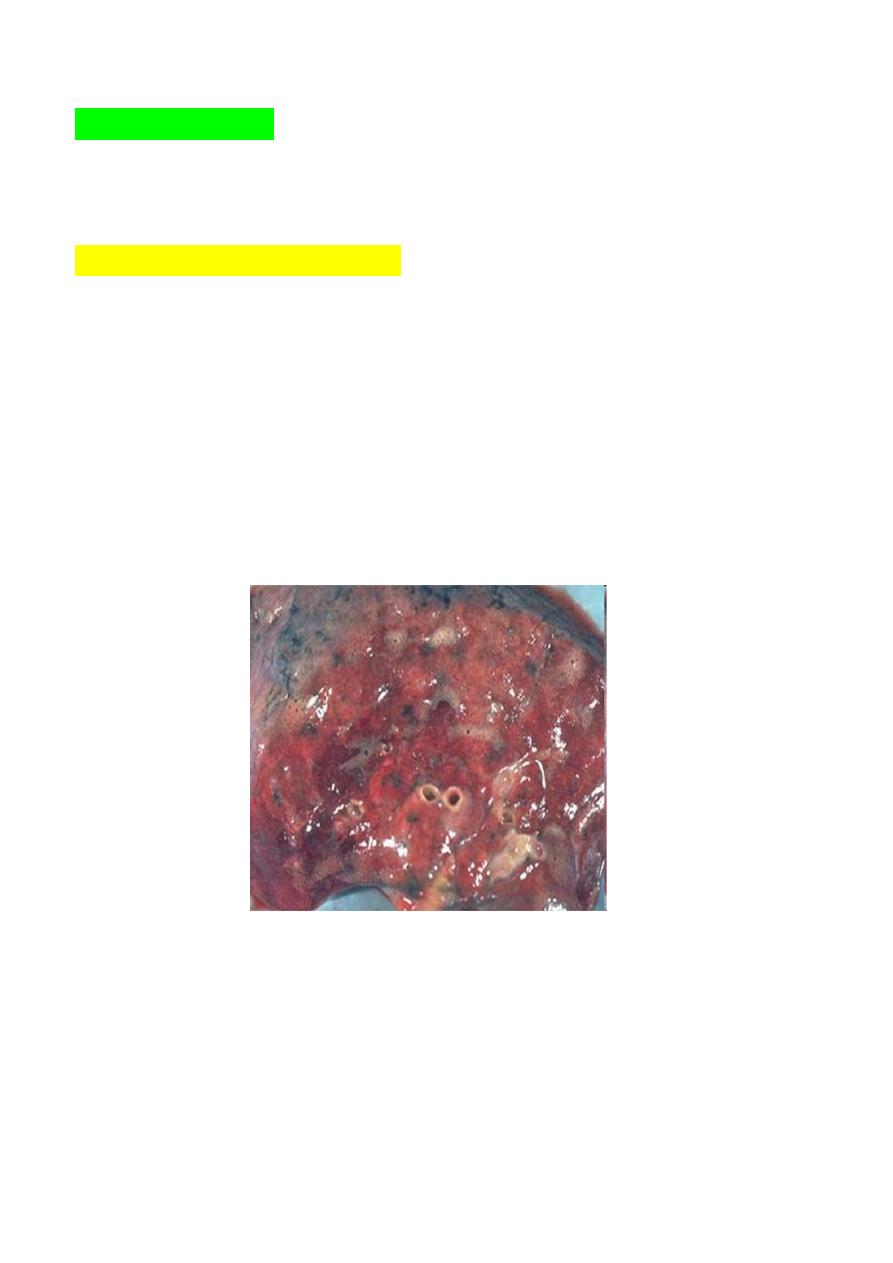
3
MORPHOLOGY
Cut surfaces of hyperemic or congested tissues feel wet and
typically ooze blood.
a) Pulmonary congestion
1- Acute pulmonary congestion:
• Alveolar capillaries engorged with blood
• variable degrees of alveolar septal edema and intraalveolar
hemorrhage.
-
2 Chronic pulmonary congestion
• Thickened & fibrotic septa
• Alveolar spaces contain hemosiderin-laden macrophages (“heart
failure cells”) derived from phagocytosed red cells.
Fig; Lung, acute pulmonary congestion.
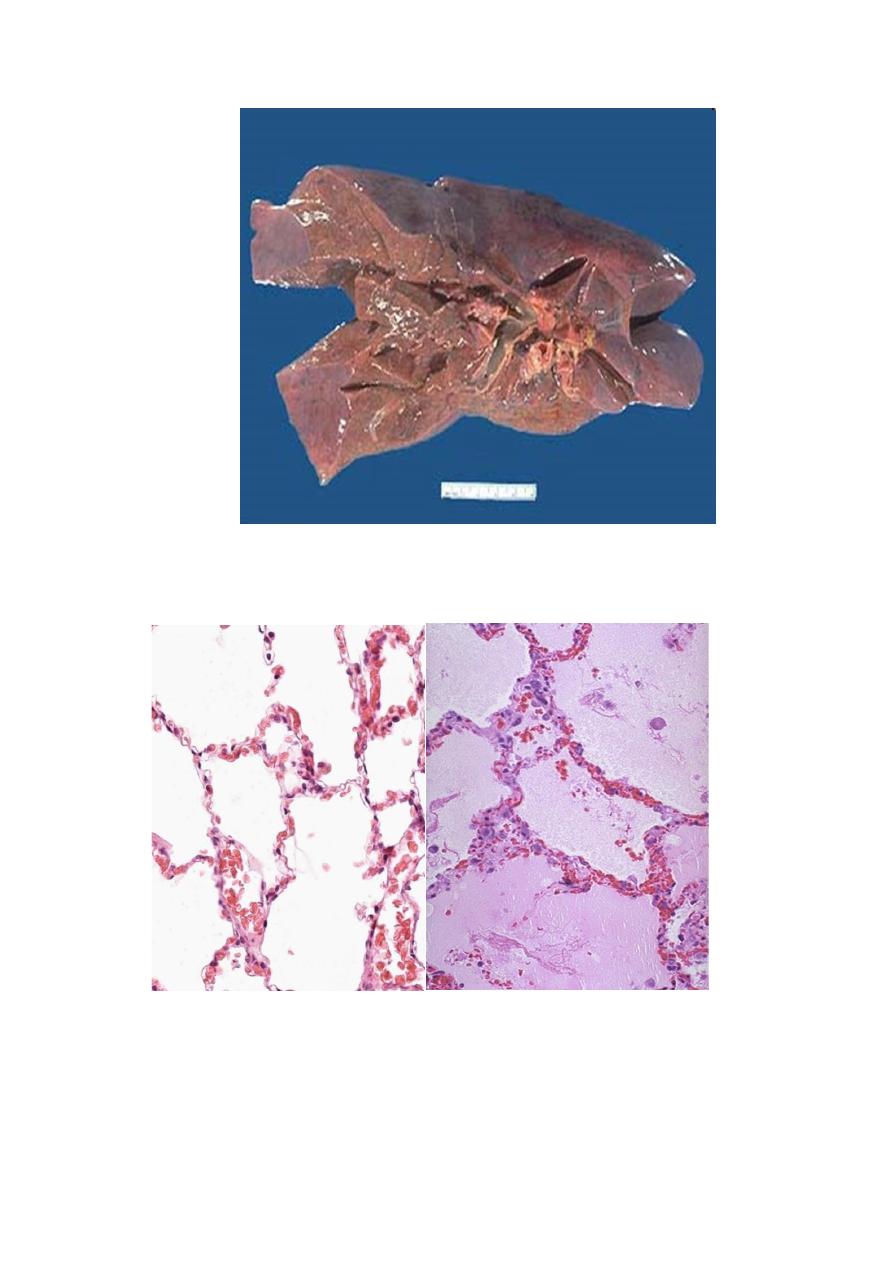
4
fig:Lung, chronic passive congestions: surface The lung has a red-brown color
due to accumulation of hemosiderin from extravasated erythrocytes. Fibrosis causes
the cut edges to stand up rather
than collapse.
Fig: left :normal lung. Right:ACUTE PASSIVE HYPEREMIA/CONGESTION, LUNG
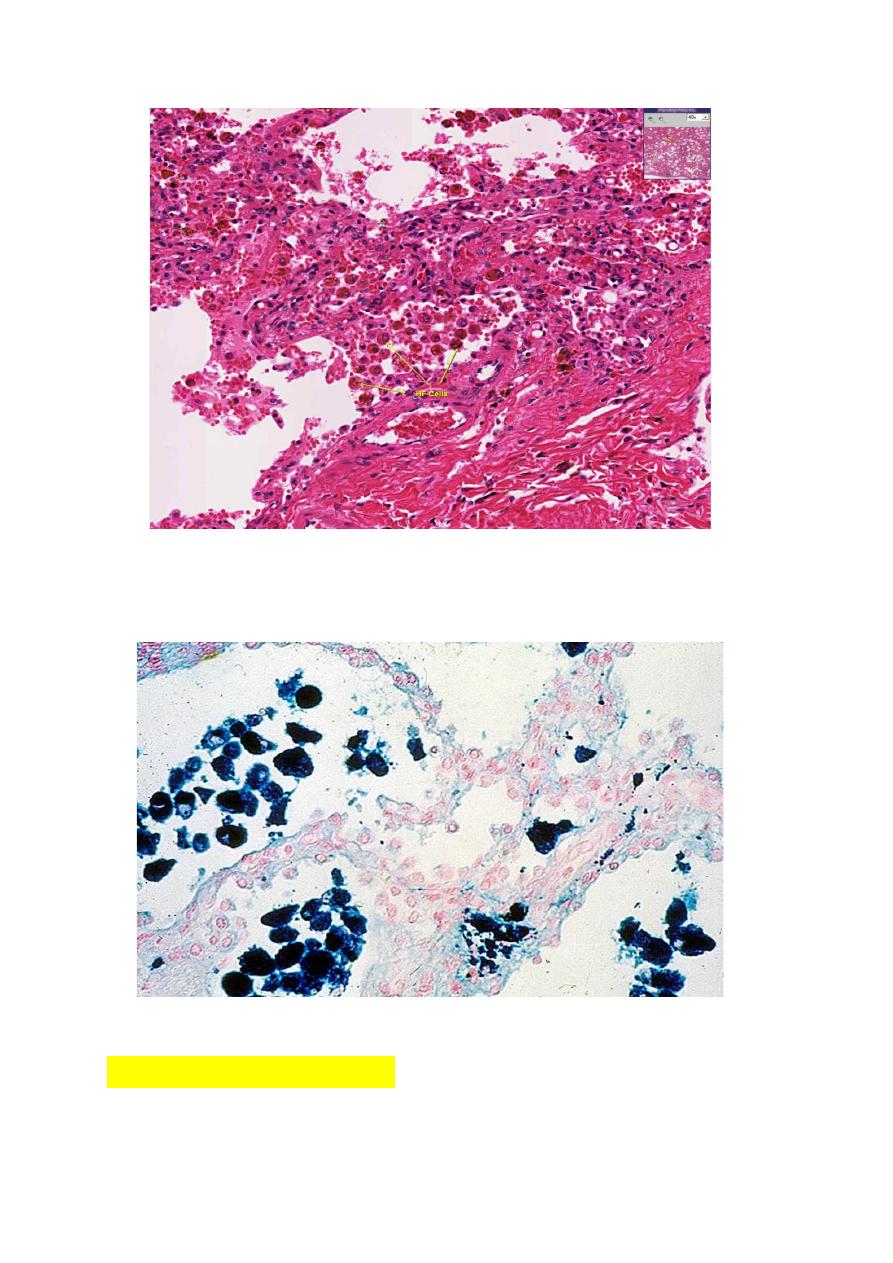
5
Fig:CHRONIC PASSIVE HYPEREMIA/CONGESTION, LUNG: heart failure cells
Fig:Special stain for haemosiderin (prusian blue) for heart failure cells
b) Hepatic congestion
1-Acute hepatic congestion:
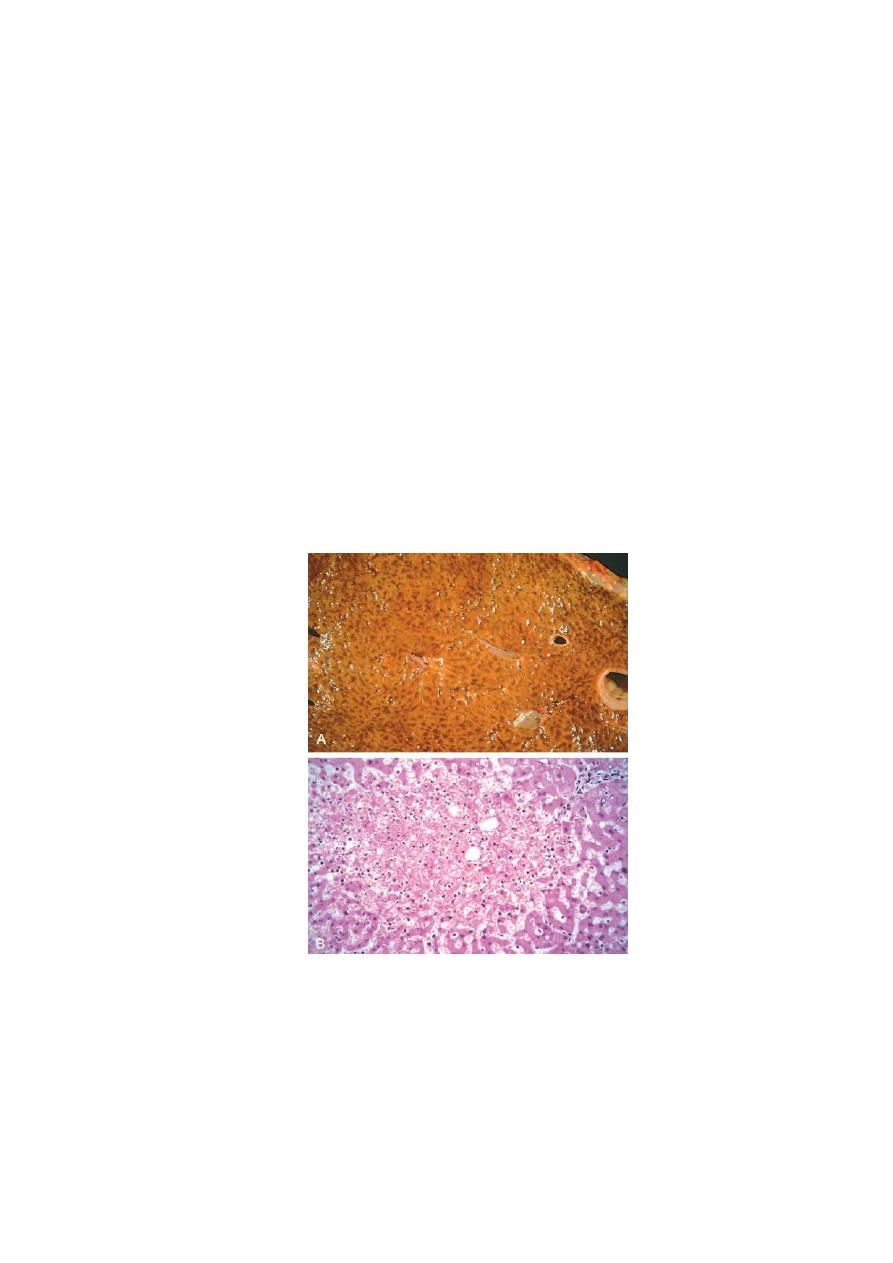
6
• the central vein and sinusoids are distended with blood,
• and there may even be necrosis of centrally located hepatocytes.
• The periportal hepatocytes, better oxygenated,???
because of their proximity to hepatic arterioles, experience
less severe hypoxia and may develop only reversible fatty change.
2-Chronic passive congestion of liver:
Gross examination
the central regions of the hepatic lobules, viewed, are
red-brown and slightly depressed (owing to cell loss) and are accentuated
against the surrounding zones of uncongested tan, sometimes fatty, liver
(nutmeg liver)
Microscopic findings
include centrilobular hepatocyte necrosis, hemorrhage,
and hemosiderin-laden macrophages.
Fig. Liver with chronic passive congestion and hemorrhagic necrosis.(A) In this autopsy
specimen, central areas are red and slightly depressed compared with the surrounding
tan viable parenchyma, creating “nutmeg liver” (so called because it resembles the cut
surface of a nutmeg). (B) Microscopic preparation shows centrilobular hepatic necrosis
with hemorrhage and scattered inflammatory cells.

7
Hemorrhage
Hemorrhage, defined as the extravasation of blood from
vessels, is most often the result of damage to blood vessels
or defective clot formation.
• capillary bleeding can occur in chronically congested tissues.
Trauma, atherosclerosis, or inflammatory or neoplastic erosion
of a vessel wall also may lead to hemorrhage, which may be
extensive if the affected vessel is a large vein or artery.
• The risk of hemorrhage is increased in a wide variety of clinical
disorders collectively called
hemorrhagic diatheses.
These have
diverse causes, including inherited or acquired defects in
vessel
walls, platelets, or coagulation factors,
all of which must function
properly to ensure homeostasis.
Hemorrhage may be manifested by different appearances
and clinical consequences.
Hemorrhage may be external or accumulate within a tissue as a
hematoma
, which ranges in significance from trivial to fatal. Large
bleeds into body cavities are described variously according to
location—
hemothorax
,
hemopericardium
,
hemoperitoneum
,
or
hemarthrosis
(in joints).
Petechiae
are minute (1 to 2 mm in diameter) hemorrhages into skin,
mucous membranes, or serosal surfaces ; causes include low platelet
counts (thrombocytopenia), defective platelet function, and loss of
vascular wall support, as in vitamin C deficiency.
Purpura
are slightly larger (3 to 5 mm) hemorrhages.
Purpura can result from the same disorders that cause petechiae, as
well as trauma, vascular inflammation (vasculitis), and increased
vascular fragility.
Ecchymoses
are larger (1 to 2 cm) subcutaneous hematomas
(colloquially called bruises).
• Extravasated red cells are phagocytosed and degraded by
macrophages; the characteristic color changes of a bruise result

8
from the enzymatic conversion of
hemoglobin
(red-blue color) to
bilirubin
(blue-green color) and eventually
hemosiderin
(golden-
brown).
The clinical significance of any particular hemorrhage
depends on:
• the volume of blood that is lost
•
and the rate of bleeding.
Rapid loss of up to 20% of the blood
volume, or slow losses of even larger amounts, may have little
impact in healthy adults; greater losses, however, can cause
hemorrhagic (hypovolemic) shock
•
The site of hemorrhage
also is important; bleeding that would
be trivial in the subcutaneous tissues can cause death if located
in the brain .
❖
chronic or recurrent external blood loss (e.g., due to
peptic ulcer or menstrual bleeding) frequently culminates
in iron deficiency anemia as a consequence of a loss of
iron in hemoglobin.
❖
By contrast, iron is efficiently recycled from phagocytosed
red cells, so internal bleeding (e.g., a hematoma) does not
lead to iron deficiency.
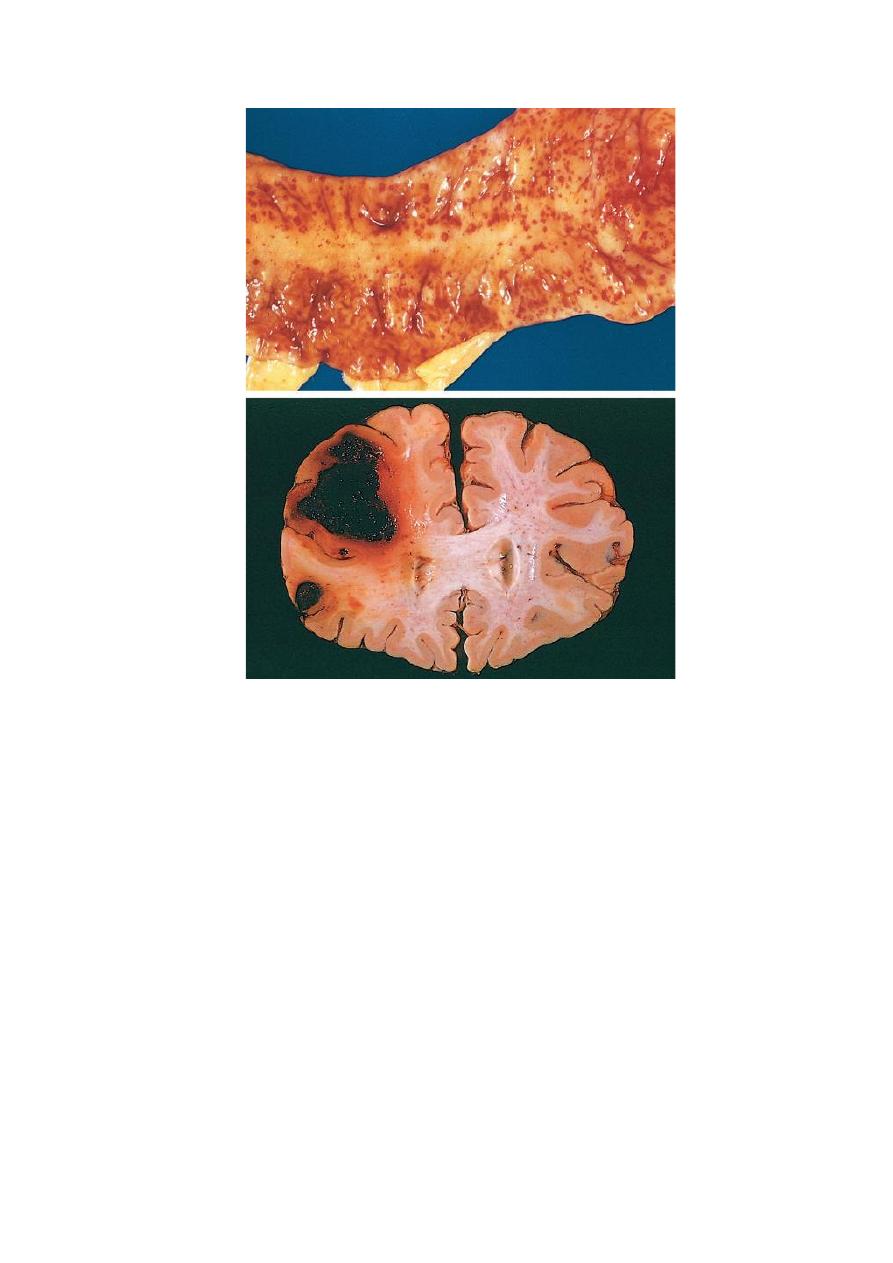
9
Fig.
(A) Punctate petechial hemorrhages of the colonic mucosa, a consequence
of thrombocytopenia. (B) Fatal intracerebral hemorrhage.
